On Classic Roads I: Paris – Brussels offers you the best bits of professional racing’s Spring Classics in France & Belgium: the cobblestones in the Hell of the North (Paris-Roubaix) and the tiny winding roads of Vlaand’rens Mooiste (Ro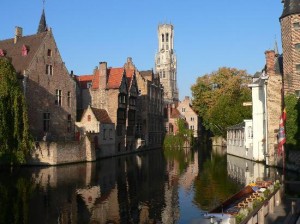 nde van Vlaanderen). Plus a handful of semiclassics. Moreover you explore northern Europe’s famous Art Cities: Paris, Lille, Bruges, Brussels, Leuven, Liège, Maastricht and Aachen. Finally you will get to know the difference between Brussels and Liège waffles. This tour can be combined into a two week tour with our On Classic Roads – Brussels to Maastricht.
nde van Vlaanderen). Plus a handful of semiclassics. Moreover you explore northern Europe’s famous Art Cities: Paris, Lille, Bruges, Brussels, Leuven, Liège, Maastricht and Aachen. Finally you will get to know the difference between Brussels and Liège waffles. This tour can be combined into a two week tour with our On Classic Roads – Brussels to Maastricht.
Paris to Brussels
Sunday: 30km, Paris – transfer to Valenciennes
Croissants & coffee, what more can one long for on a sunny Sunday morning in Paris ? A bicycle maybe ? Eh oui, a bike saddle is arguably the best vantage point to explore France’s capital. No wonder the city’s Vélib bicycle rental programme is so popular. Of course we cycle past Paris’ highlights as Eiffel Tower, Champs Elysées, Notre Dame & Pompidou. But it is the quiet backstreets of Le Marais, this hidden vineyard behind Montmartre and the patisserie in the XI Arr. that make this city tour unforgettable. In the evening we transfer by car to Valenciennes. Tomorrow the meticulously paved cobblestones of the Champs Elysées will give way to the cruel pavées of the classic bike race Paris-Roubaix.
Monday: 100km of Paris-Roubaix between Valenciennes & Lille
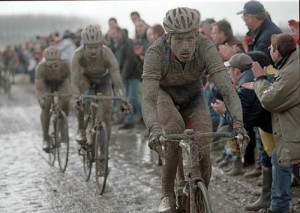 Another hearty breakfast is what we need to get this day in the Hell of the North started. Since immediately after heading out, we will meet with the legendary stretch of cobblestones in the forest of Wallers-Arenberg. It was here that triple PR winner Johan Museeuw almost lost his leg. The sequence of secteurs pavés like Orchies, Mons-en-Pévèle, Cysoing, Camphin-en-Pévèle, Pavé du Calvaire, Carrefour de l’Arbre leave our arms shaking. A sigh of relief is heard as we ride onto the smooth rolling stones of the Avenue Crupelandt. Then, to the deafening sound of the cheering crowds we turn into the vélodrome de Roubaix. The remaining kilometers to Lille are a piece of cake. We spend a relaxing evening in this lively city.
Another hearty breakfast is what we need to get this day in the Hell of the North started. Since immediately after heading out, we will meet with the legendary stretch of cobblestones in the forest of Wallers-Arenberg. It was here that triple PR winner Johan Museeuw almost lost his leg. The sequence of secteurs pavés like Orchies, Mons-en-Pévèle, Cysoing, Camphin-en-Pévèle, Pavé du Calvaire, Carrefour de l’Arbre leave our arms shaking. A sigh of relief is heard as we ride onto the smooth rolling stones of the Avenue Crupelandt. Then, to the deafening sound of the cheering crowds we turn into the vélodrome de Roubaix. The remaining kilometers to Lille are a piece of cake. We spend a relaxing evening in this lively city.
Tuesday: 90km in Flanders’ Fields from Lille to Nieuwpoort
In the morning we have a little time to explore Lille’s medieval city center. Then along the Deûle river we head towards the French – Belgian border, which is formed by another river, the Leie / la Lys. Historically, the Leie valley was known for the spinning and weaving of flax. We cross border & Leie and cycle north to Ypres. During World War I the city of Ypres was the stage for 3 famous battles, the last one causing nearly half a million casualties for only a few miles of ground. After the war the town was rebuilt using money paid by Germany in reparations, with the main square, including the Cloth Hall and town hall, being rebuilt as close to the original designs as possible. The Cloth Hall today is home to In Flanders Fields Museum, dedicated to Ypres’s role in the First World War. We solemnly cycle through the Menin Gate. The memorial’s location is especially poignant as it lies on the eastward route from the town which allied soldiers would have taken towards the fighting – many never to return. Every evening since 1928, at precisely eight o’clock, traffic around the imposing arches of the Menin Gate Memorial has been stopped while the Last Post is sounded beneath the Gate by the local fire brigade. Between all those war cemeteries, it is time to divert our mind. 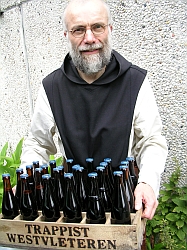 What better place can we choose than the St Sixtus abbey in Westvleteren, where the Trappist monks are brewing the world’s best beer. In Diksmuide we visit the Yser Tower, major symbol of Flemish emancipation, especially regarding the rights to use the Dutch language and the rights to political autonomy. From Diksmuide over Pervijze we cycle on the Frontzate, an old railroad bed. The Noordvaart canal brings us to the large Ganzepoot (goose foot) sluices complex that forms the mouth of the Yser river into the North Sea. In the World War I Battle of the Yser, Hendrik Geeraert opened the sluices and the Yser plain was flooded to stop the advancing Germans, causing the 4 year trench war. Riding around the sluices, we see the water off to sea and are welcomed to Nieuwpoort by the cavalry statue of King Albert I.
What better place can we choose than the St Sixtus abbey in Westvleteren, where the Trappist monks are brewing the world’s best beer. In Diksmuide we visit the Yser Tower, major symbol of Flemish emancipation, especially regarding the rights to use the Dutch language and the rights to political autonomy. From Diksmuide over Pervijze we cycle on the Frontzate, an old railroad bed. The Noordvaart canal brings us to the large Ganzepoot (goose foot) sluices complex that forms the mouth of the Yser river into the North Sea. In the World War I Battle of the Yser, Hendrik Geeraert opened the sluices and the Yser plain was flooded to stop the advancing Germans, causing the 4 year trench war. Riding around the sluices, we see the water off to sea and are welcomed to Nieuwpoort by the cavalry statue of King Albert I.
Wednesday: 50km, Nieuwpoort – Ostend – Bruges
Westende, Middelkerke, Mariakerke. Typical beach towns with high rise buildings on Belgium’s 64km coastline. Quietly pedaling along the North Sea, the sand dunes of Raversijde pass by. And then it is Oostende, “The Queen of the Belgian sea-side resorts”. If the weather is good, we spend a day at the beautiful fine-sand beach in front of Ostend’s casino. Otherwise we visit the James Ensor museum and eat a pancake at Fort Napoleon. Before we hit the road again. Along the Brugse Vaart canal, the towers of Brugge die Scone loom up on the horizon, a centuries old skyline. The historic city centre is a prominent UNESCO World Heritage Site. From the end of the 13th century, it was the “chief commercial city” of the world, featuring the first stock exchange. Bruges has most of its medieval architecture intact. In the last half of the 19th century, Bruges became one of the world’s first tourist destinations attracting wealthy British and French tourists. We follow in their footsteps, leisurely taking in the various sites of the Markt, the Burg and the Beguinage.
Thursday: 70km, Bruges – Kluisbergen: E3 & Kuurne
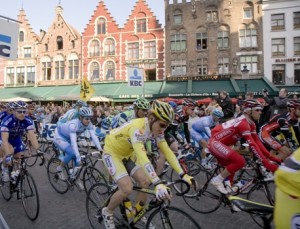
After a morning walk in this splendid city, with visits to the Gruuthuse museum and The Flemish Primitives museum, we have lunch in Michelin star restaurant Sans Cravate, without tie. Hopefully we still have appetite left in this world’s capital of chocolates. With our tummies full we show up at the Markt, for the traditional start of the Ronde van Vlaanderen. Though we immediately make a shortcut to the Vlaamse Ardennen, decor of this classic’s final 100 kms. First along the Gentse Vaart canal, then passing some castles and the pretty city of Tielt. Next we cross the finish lines of two semi-classics in preparation of the Ronde van Vlaanderen, in Harelbeke and Kuurne. We pull the brakes in Kluisbergen for a good night rest before Vlaanderens’ Mooiste.
Friday: 95km, Kluisbergen – Meerbeke: Ronde van Vlaanderen
The cobblestones of Kwaremont, 100km before the finish in Meerbeke. This is where the battle for the Vlaamse Ardennen begins. If you’re not in the first rows here, you’re done, never making it back to the lead. The trio Kwaremont, Patersberg, Koppenberg leads us to the new 2012 finish in Oudenaarde. After savouring our victory we take a break and visit the Museum Centrum van de Ronde.
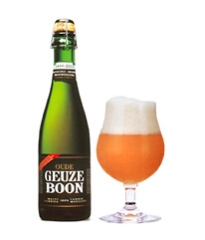
Physically and mentally prepared for the remainder of the ride, we continue on the old course of the Ronde van Vlaanderen. The hills follow in rapid succession. Both beautiful and painful, this is the Vlaamse Ardennen. Breaking point is to be the Muur van Geraardsbergen, breathtaking in any sense. Time for an invigorating mattentaart. Now only the Bosberg is still left on our path to the 1973 – 2011 finish on the Halse Steenweg in Meerbeke. The hospital B&B in rural Pajottenland lets us sample the local cuisine, of course accompanied by a local geuze beer.
Saturday: 40km of Geuze, Bruegel & into Brussels
Smooth rolling hills highlight the beauty of the Pajottenland, land of geuze and Bruegel. Hard to believe this tranquil patch is within a stone’s throw of Europe’s capital. Yet, Bruegel used to make his frequent trips here from the Hoogstraat by foot. We visit the magnificent castle of Gaasbeek. About this castle and its colourful inhabitants, tomes of books have been written. Gripping stories full of intrigue, war, treason and megalomania. To recover we’ll need an artisanal icecream from the Waterhof farm. Or a kriek cherry beer from Lindemans. Then we are on Bruegel’s trails. The Pede Watermill is depicted in “Magpie on the Gallows” as it looked like 450 years ago. Today’s mill mentions 1772 on its facade. Next is the church of Sint-Anna-Pede, prominent in “The parable of the Blind”. An 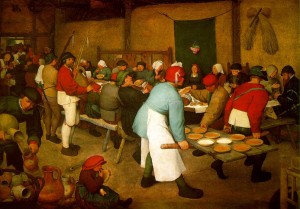 old barn is said to be the stage for “Peasant Wedding”. Pieter Bruegel the Elder was sometimes called the “peasant Bruegel”. Bruegel delighted in observing the droll behaviour of the peasants, how they ate, drank, danced, capered or made love… He represented them as they really were, betraying their boorishness in the way they walked, talked, danced, stood still or moved. But above all, his paintings speak of a deep love for the warmhearted Pajots. Eating a royal slice of bread with soft cheese and radishes flushed down with a geuze, it is easy to understand old Breugel. We’ve already spotted the big city in the distance, now it is time to dive under the ringroad and into the city. We ride by Astridpark, home to Belgium’s number one football team Anderlecht. The canal Brussels-Charleroi is a cyclist’s gateway into the city center. Going out in Brussels is a fun conclusion to this week of classics.
old barn is said to be the stage for “Peasant Wedding”. Pieter Bruegel the Elder was sometimes called the “peasant Bruegel”. Bruegel delighted in observing the droll behaviour of the peasants, how they ate, drank, danced, capered or made love… He represented them as they really were, betraying their boorishness in the way they walked, talked, danced, stood still or moved. But above all, his paintings speak of a deep love for the warmhearted Pajots. Eating a royal slice of bread with soft cheese and radishes flushed down with a geuze, it is easy to understand old Breugel. We’ve already spotted the big city in the distance, now it is time to dive under the ringroad and into the city. We ride by Astridpark, home to Belgium’s number one football team Anderlecht. The canal Brussels-Charleroi is a cyclist’s gateway into the city center. Going out in Brussels is a fun conclusion to this week of classics.

